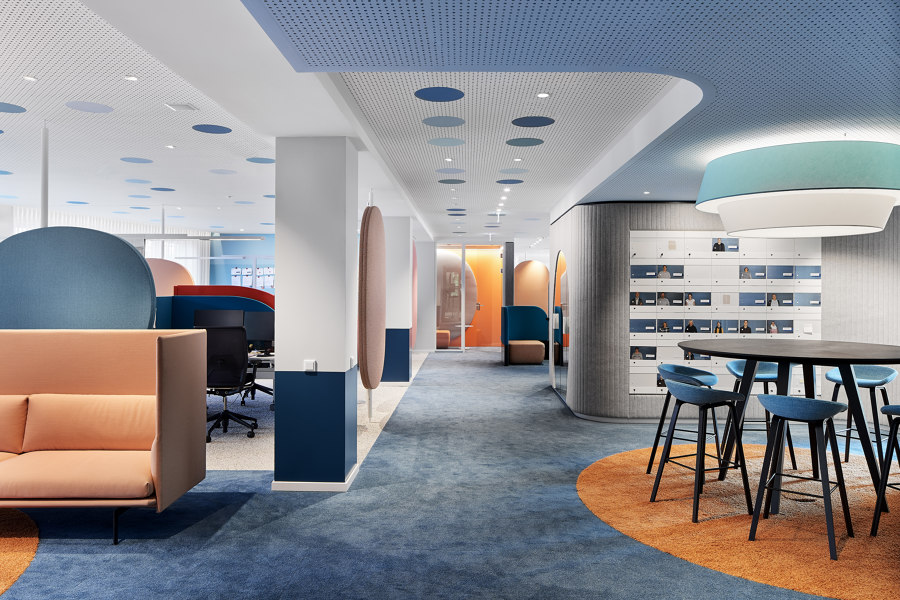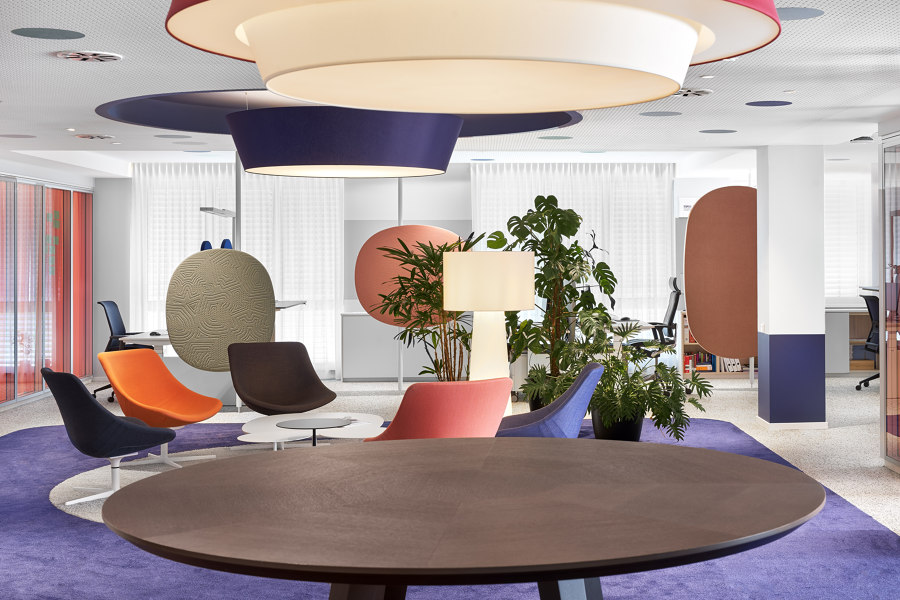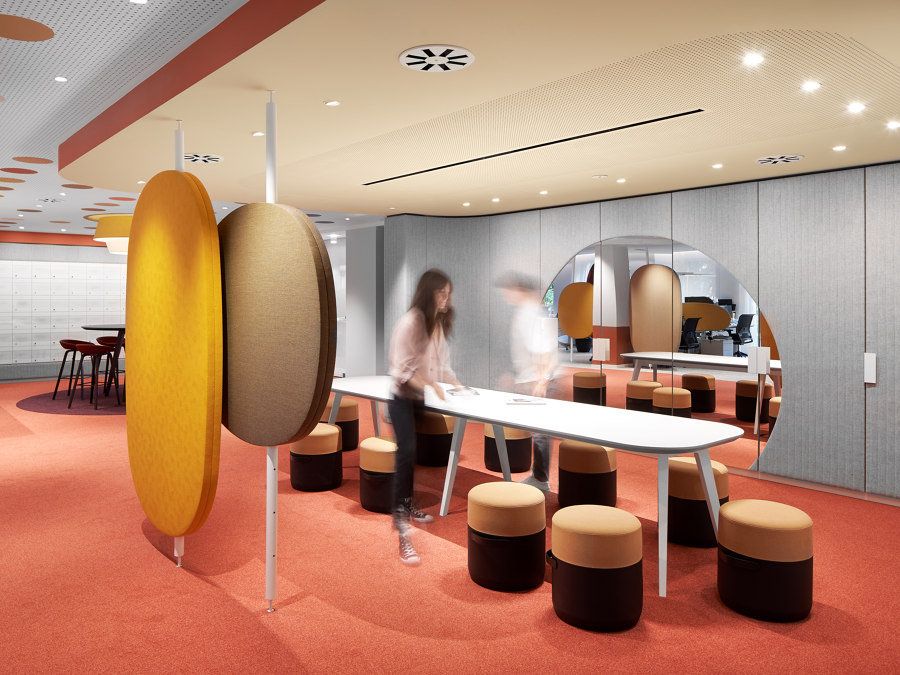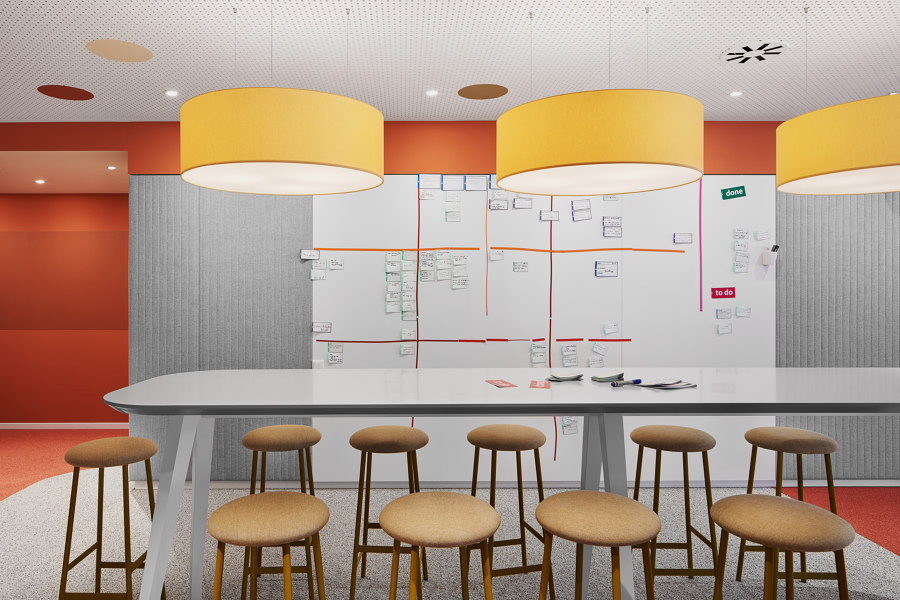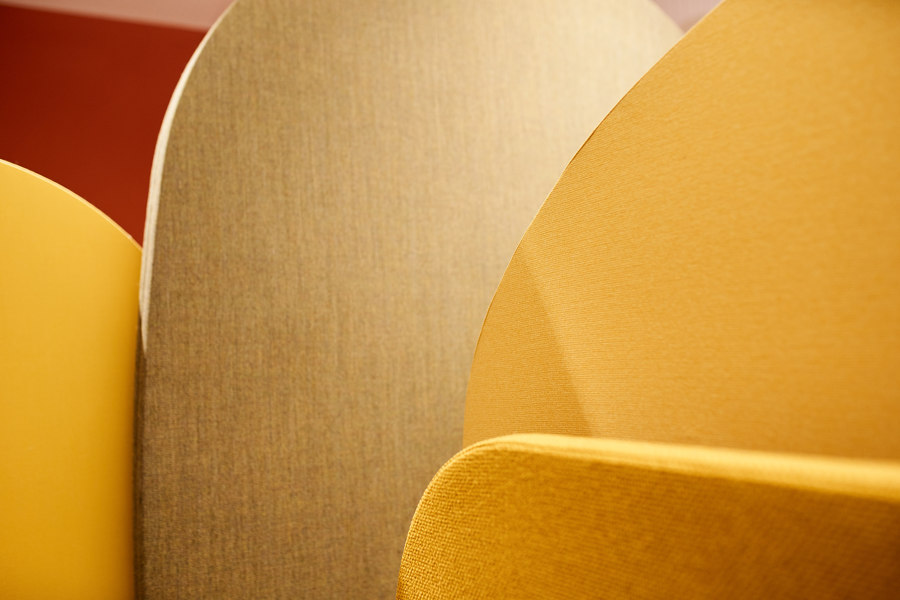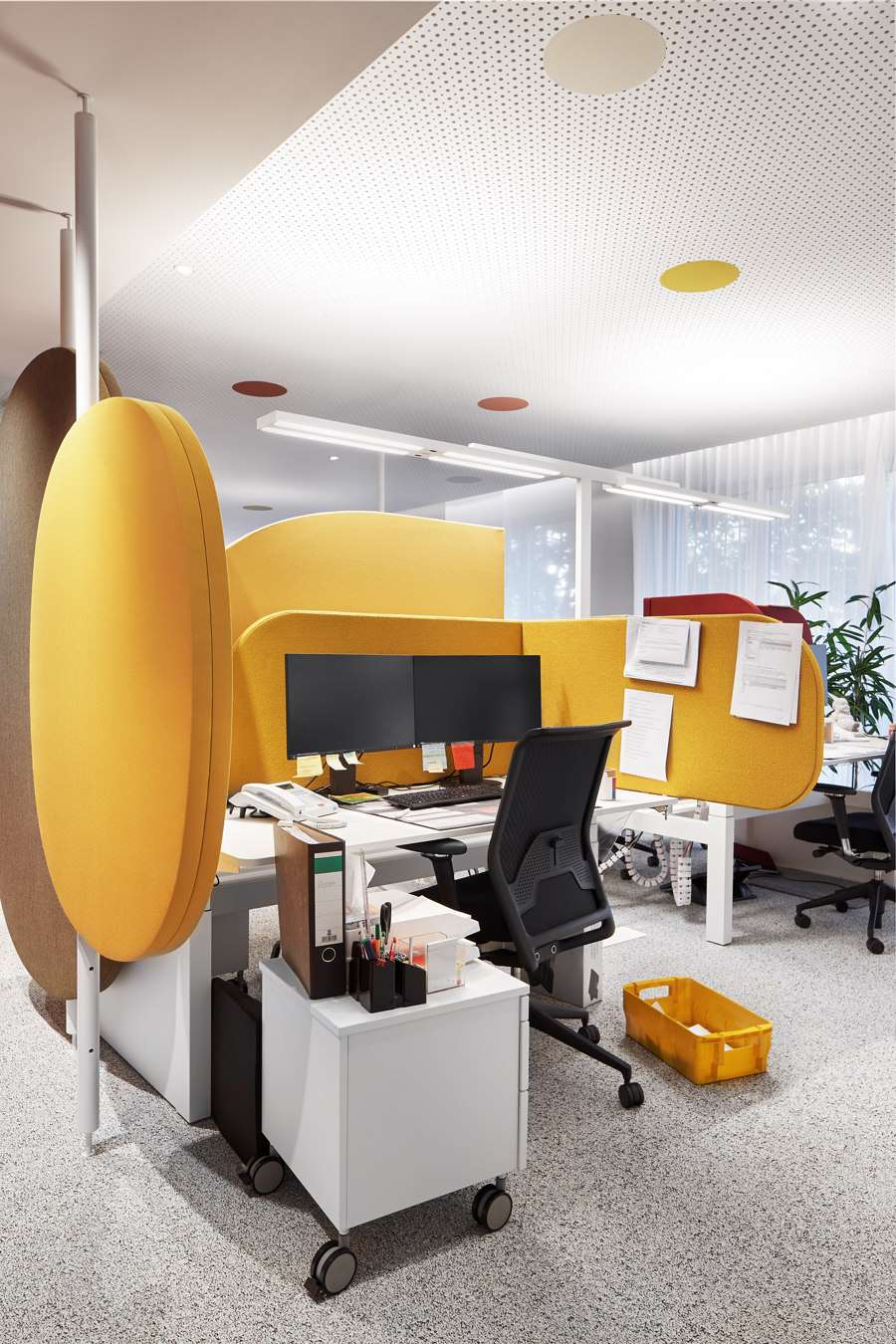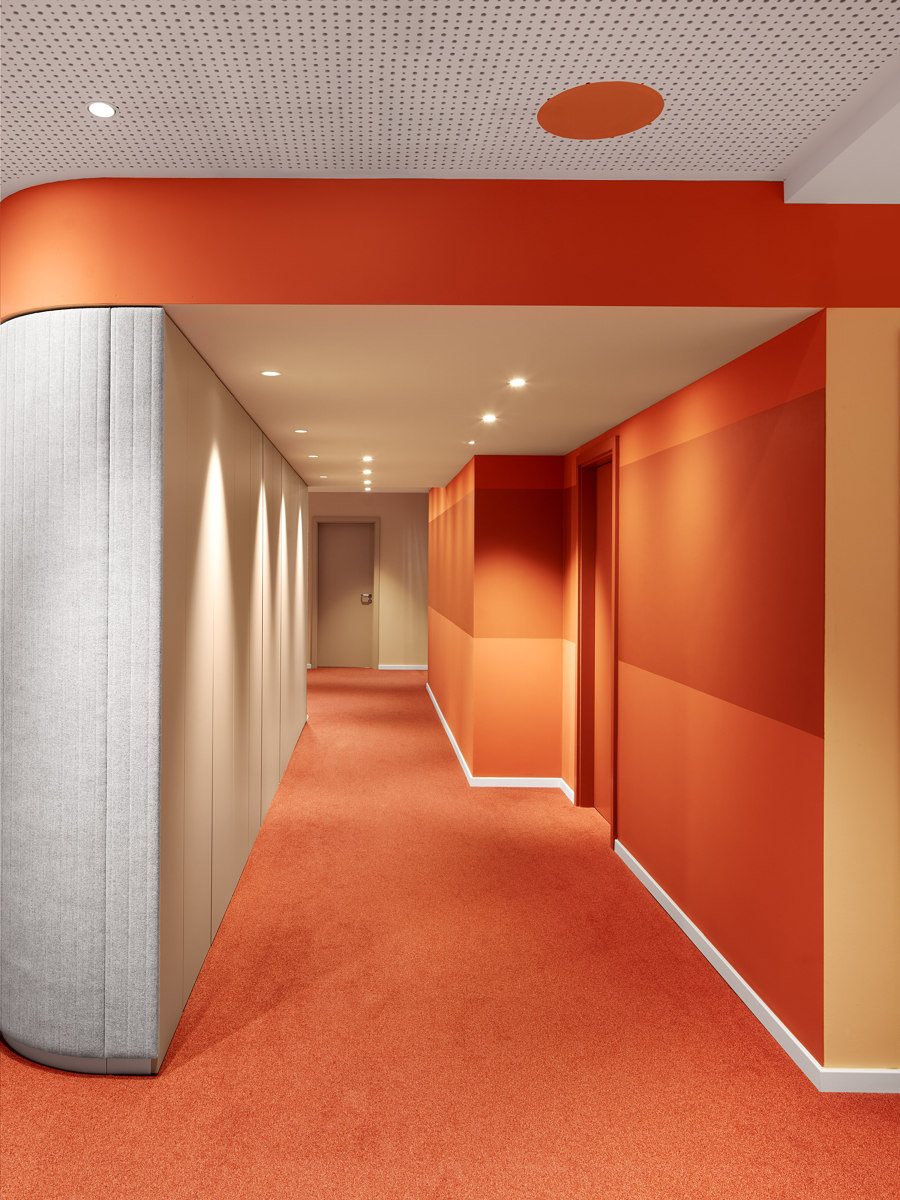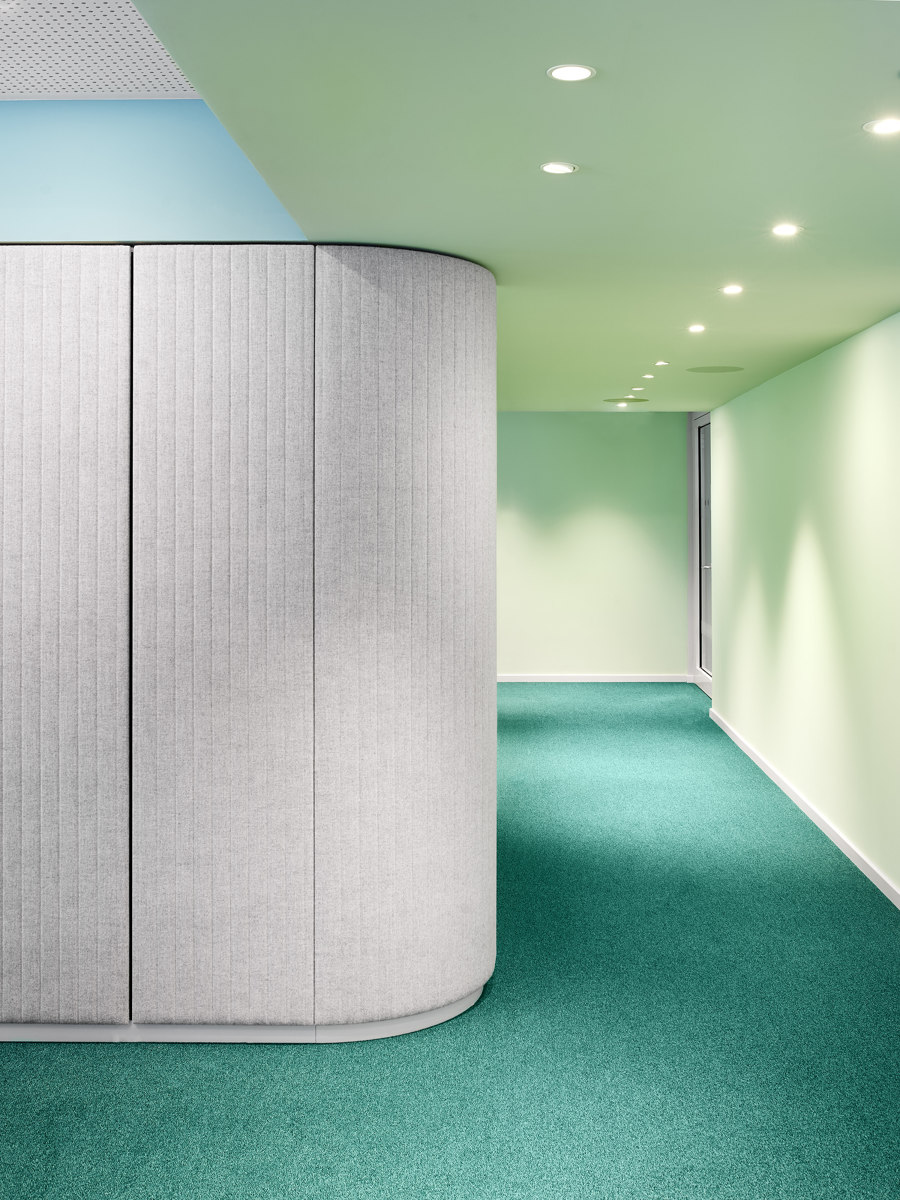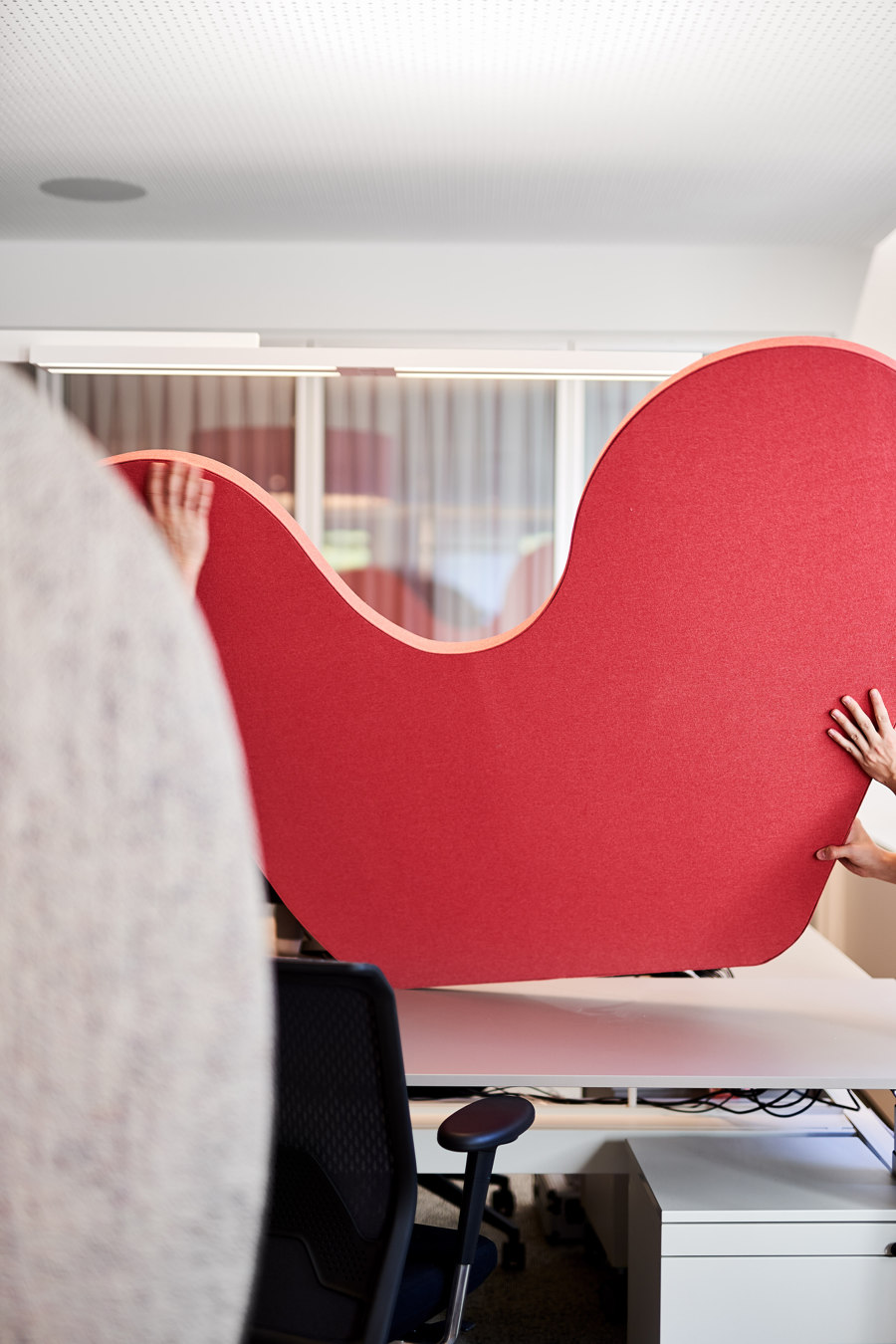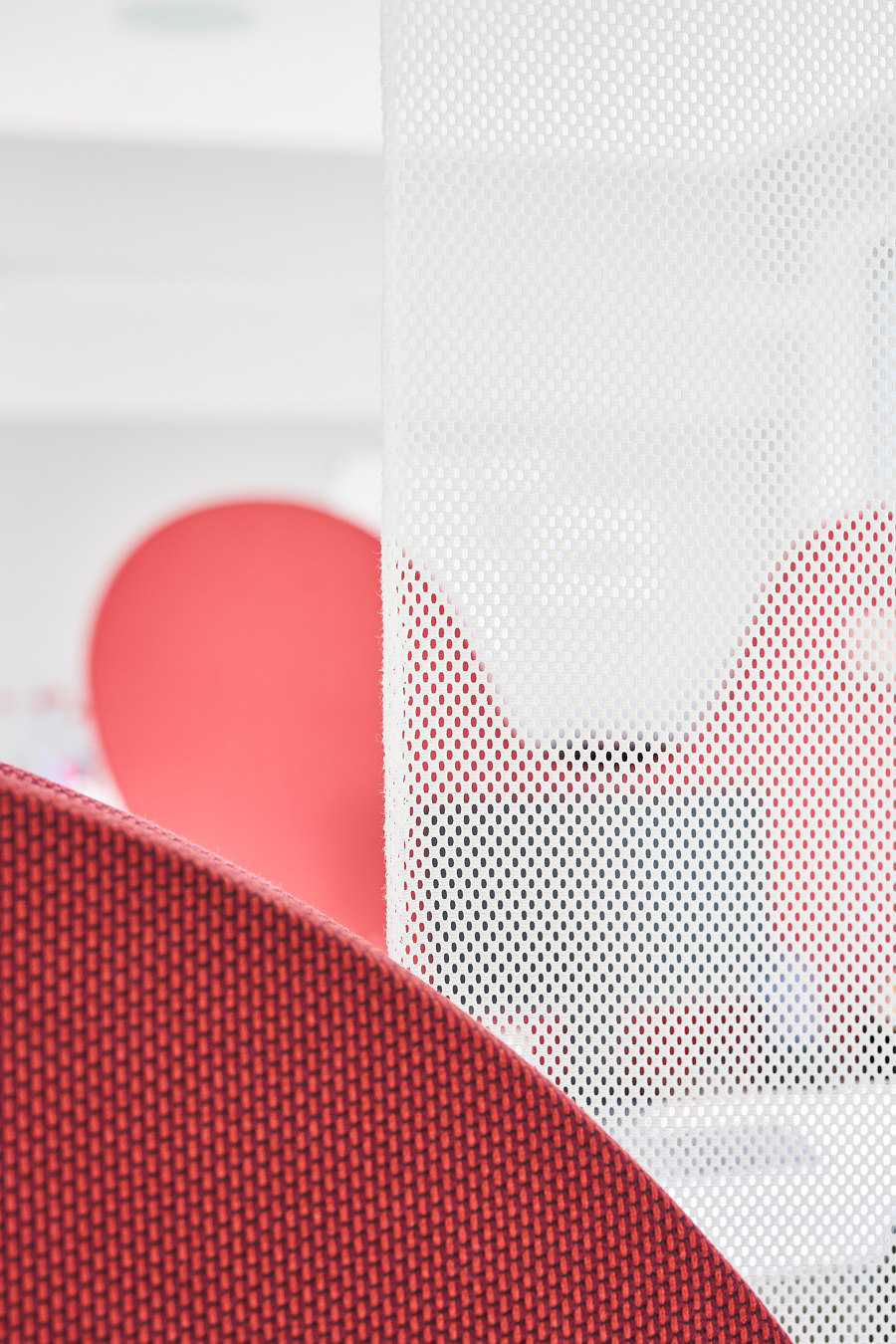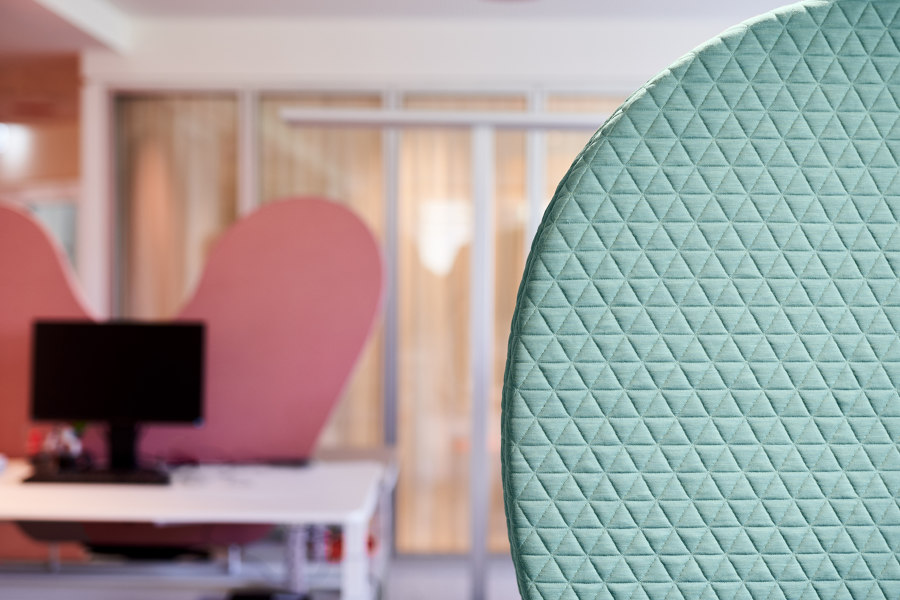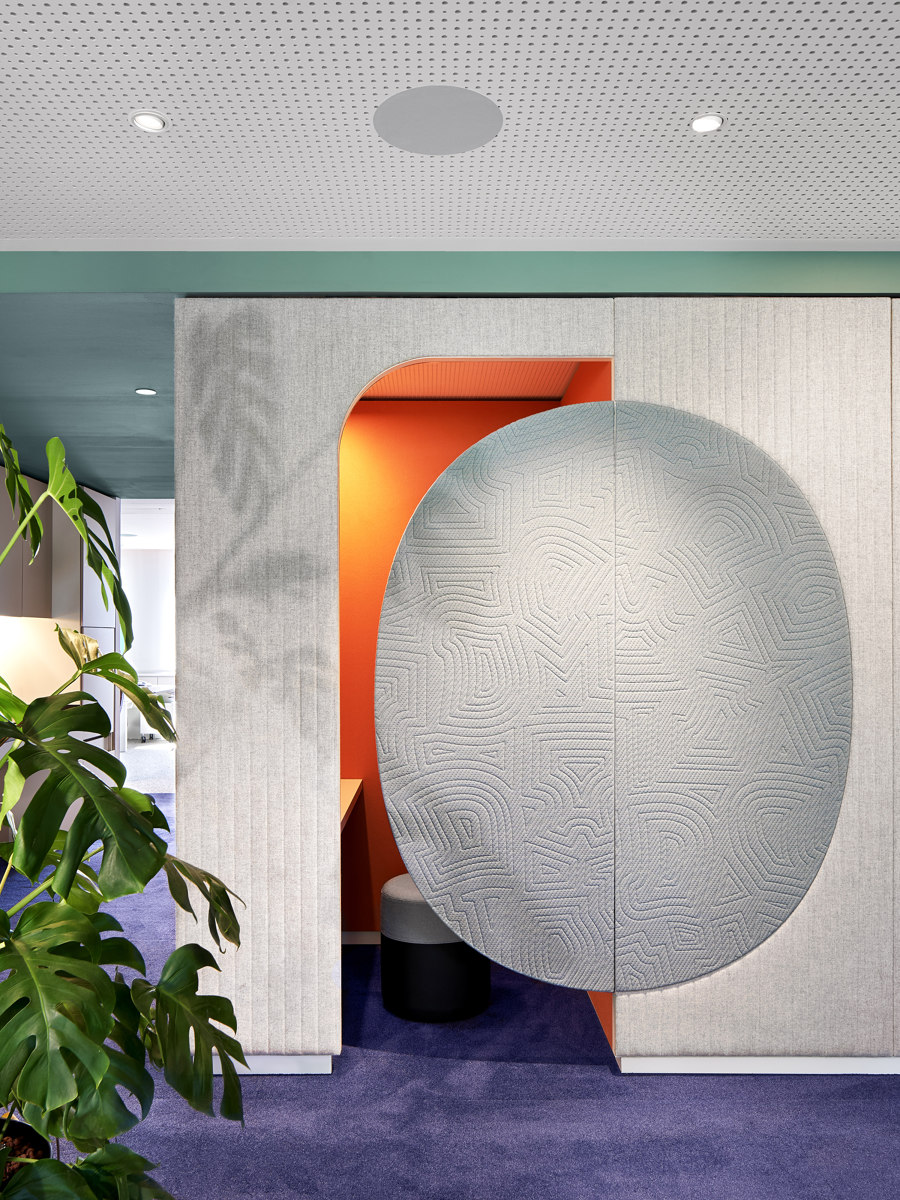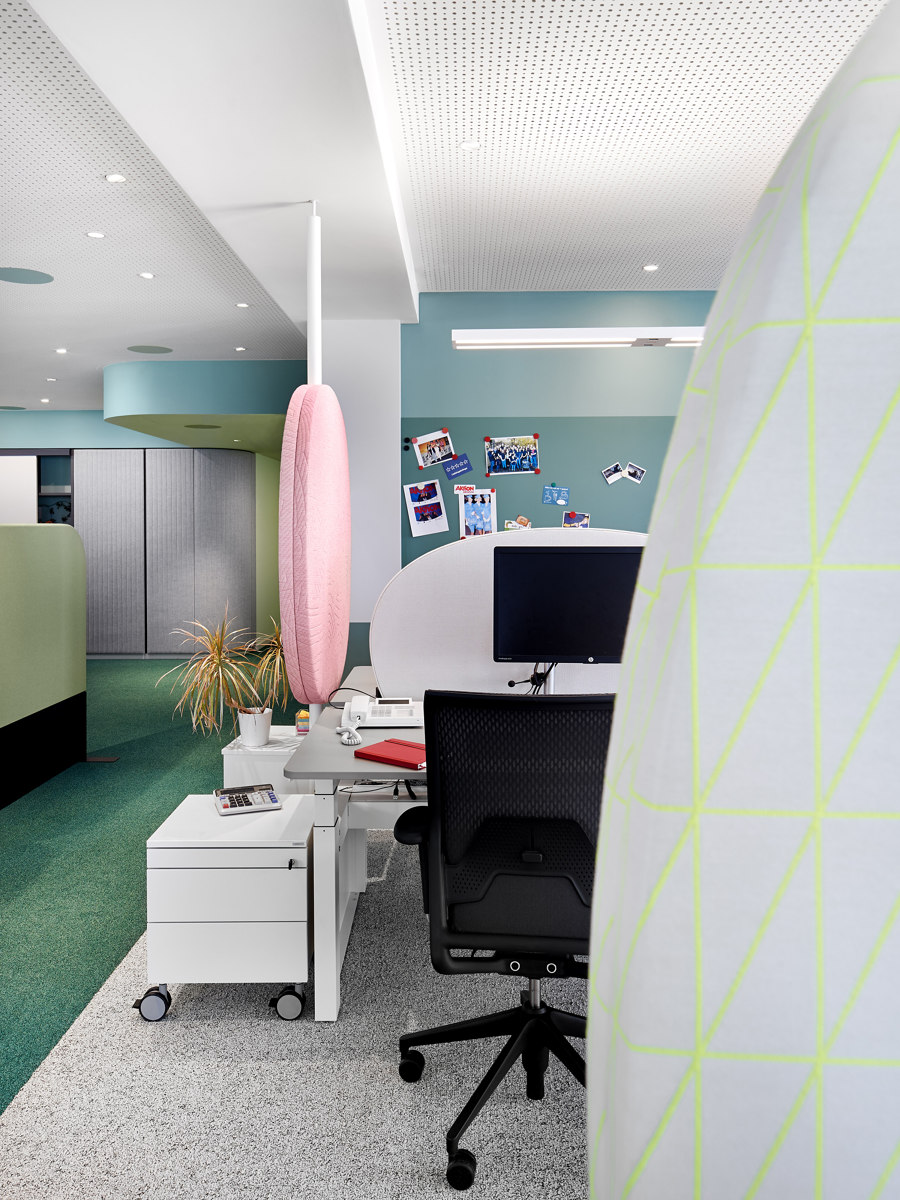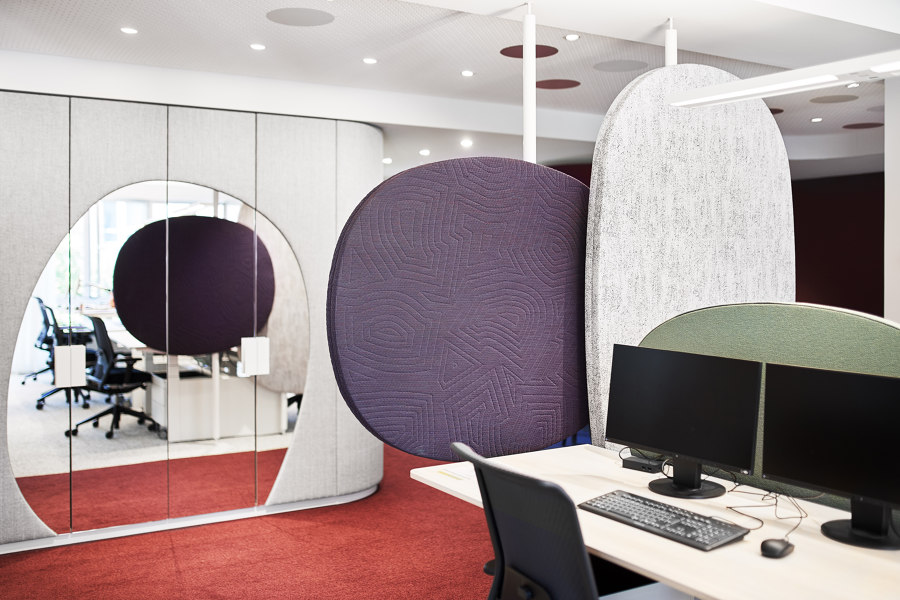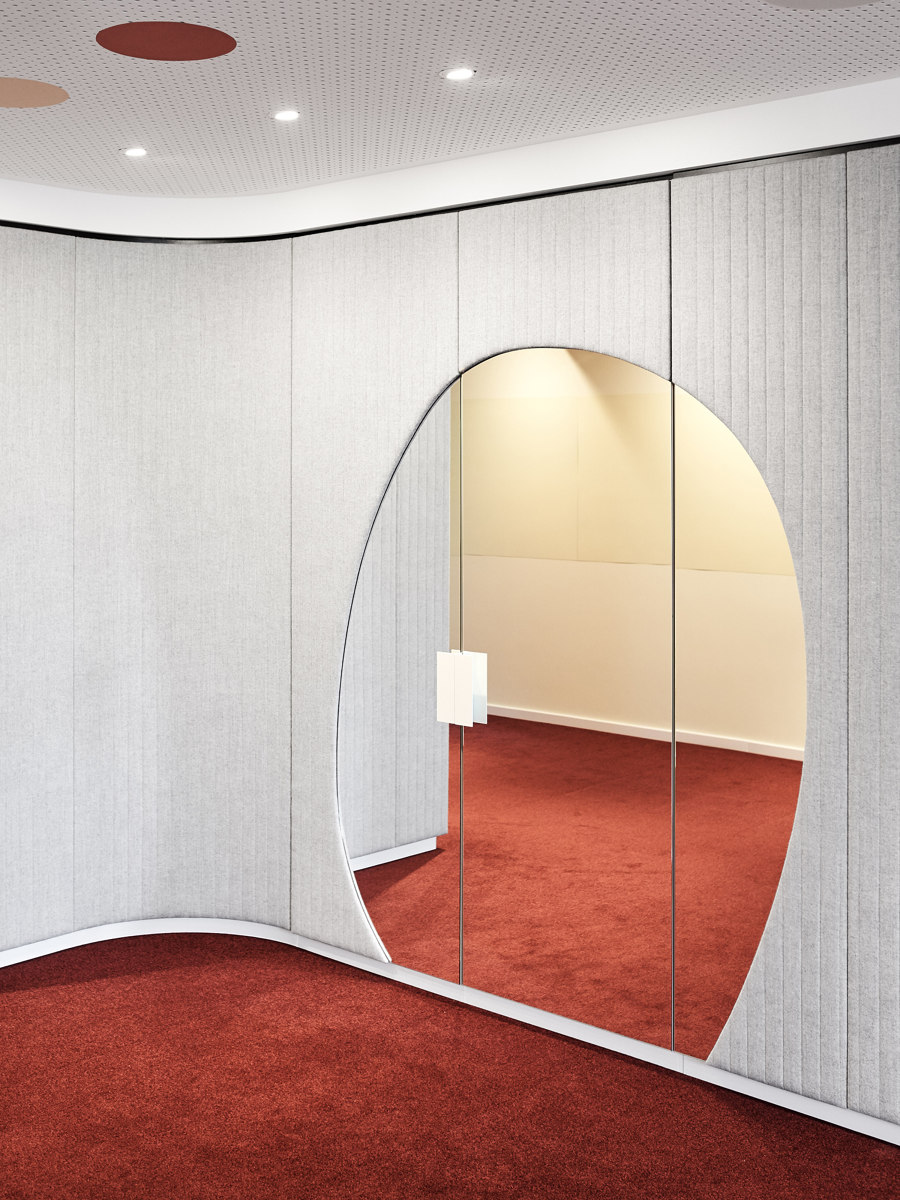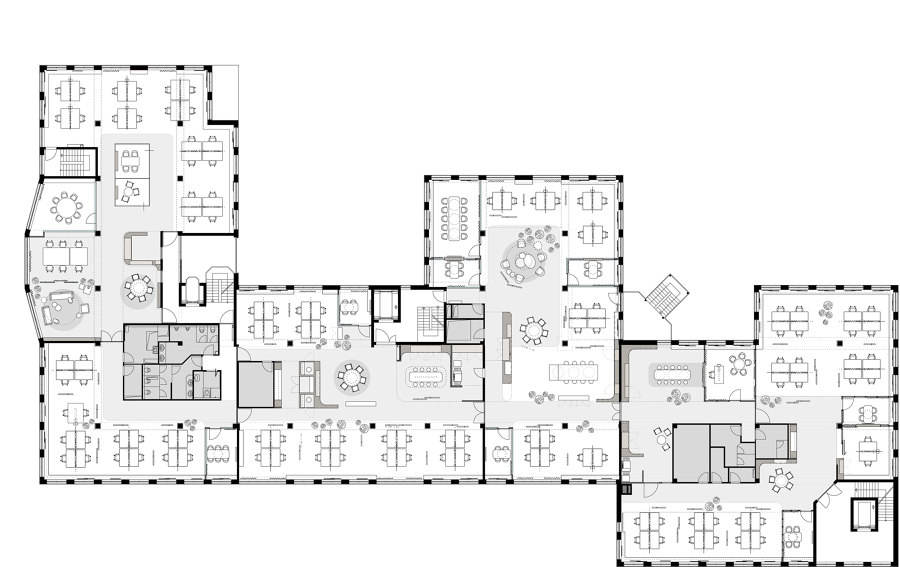Their mission is clear: »WE wins the day.« As Germany’s largest private charity in the social sector, Aktion Mensch is dedicated to ensuring the normal coexistence of people with and without disabilities in all walks of life. Inclusion is key for this non-profit association, which has been financed through a social lottery for over 50 years. And this now becomes evident in their own headquarters in Bonn. But how can the impressive diversity of its team be fostered in everyday working life without limits and restraints becoming tangible? –– The answer: When we translate this WE into a design concept that takes diversity as its guiding principle. Interior architecture as a strong framework for the human.
Our aim: To create a dynamic work world across 3900 m² where differences are normal. Meeting the same demands as in the numerous projects that Aktion Mensch supports each month. Making innate values tangible. Creating a place where all employees feel they belong. To do this, we exploited our strengths as a multidisciplinary design studio to implement inclusion in a modern and sustainable way. While at the same time preserving the structural substance of this office building from 2003, because a responsible use of resources is just as important. –– This is how we like to work best: by taking the existing structure into account and working effectively within the given budget. And if everything must be implemented while business operations continue, no problem. Responsibility shows itself best in cooperation.
After reorganising the total floor area into eight zones, work life is organised around a village square that forms the centrepiece of each area. As central meeting places, all village squares have their own theme, from which the colour scheme for the square and the adjacent department is derived. Each colour concept is completed by an individualised ceiling. This always provides a definite answer to the question »Where shall we meet?«: at the festival, the harbour, on the sports field, in the garden, the library or at the market. This not only improves orientation, but strengthens the sense of belonging. Neighbourhoods are cultivated. At Aktion Mensch, cultural identity is created through real-life diversity. –– If nobody is excluded, then anonymity no longer has any place.
Employee diversity is illustrated in the bold colours of the room elements. Changeable furniture, soft materials and round shapes that are never perfectly round. Each of them is unique, just like the personalities who work here. A joy for life is expressed throughout. Differences are revealed, all of which appear quite normal here. A sense of well-being can be felt at all times. The space tells stories. And the work world is readable for everyone in their own language. –– Lust for life. Desire for diversity. Vibrancy. Diverse, variable, inward leaning, approachable, taking a stance. Equal rights on an equal footing. This is what distinguishes our work world for Aktion Mensch.
Communication hubs in village squares, which can be regrouped according to your requirements and preferences, promote identification with your work environment. Workplaces have mobile design elements that can be adapted individually. Flexibility is key here, also in order to ensure needs-based accessibility. A high degree of self-determination, which our design concepts enable in a natural and intuitive way, is a vital prerequisite for fully functioning agility.
The modular spatial system works with revolving panels for flexible use and individual adaptability. It allows specific needs to be met at all times. This also applies to the acoustic panels, curtain filters and planted islands, which provide additional privacy. Mirrors are employed to enlarge the space. Modular furniture such as height-adjustable tables for wheelchair-accessible working and wheelchair-accessible kitchenettes are integrated as a matter of course. Privacy is created by means of freestanding sideboards that offer lockable storage space and encompass a particular area as guiding objects. Media technology is directly integrated into the upholstered walls. The lighting concept highlights the room panels and upholstered walls as homogeneous elements that structure the open-plan office and give it its unmistakable character.
Inclusive design is about more than just barrier-free accessibility. A use-friendly environment ensures that all employees can rise to their full potential. Starting with cosy telephone booths with upholstered elements that serve as acoustic oases. Noise reduction using soft, tactile and inviting textiles is not limited to the retreat rooms, however. Carpets with striking colours and tactile surfaces also provide clear guidance, thereby ensuring an increased level of workplace safety. Finally, the coding of the different zones is intuitively understandable.
Co-design inspires and increases the emotional value of your workplace. Especially if it also encourages all employees in their own independence. Just as the employer intended here. This is how appreciation works in a better society. Economic efficiency goes hand in hand with social sustainability. Yet another signal that Aktion Mensch has really taken all needs into account. Moreover, the new work world also shows that the association’s sense of responsibility does not stop at the well-being of its own staff. WE is written large here quite deliberately. The result of our work is a consistent translation of the brand and corporate culture into an atmospheric spatial design that creates identity internally and externally. And which not only underscores diversity, but also a cohesive team spirit on the part of the employees – across all levels. Because a humane environment without borders creates value for one and all.
Design Team:
Ippolito Fleitz Group
Team: Michael Bertram, Marlene Court, Pilar Huerta, Peter Ippolito, Tim Lessmann
